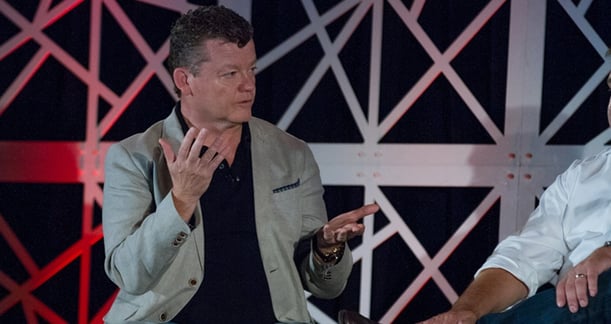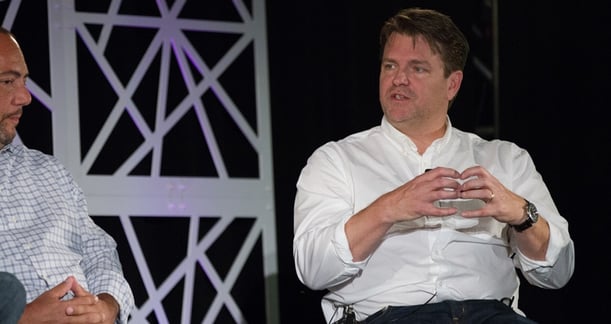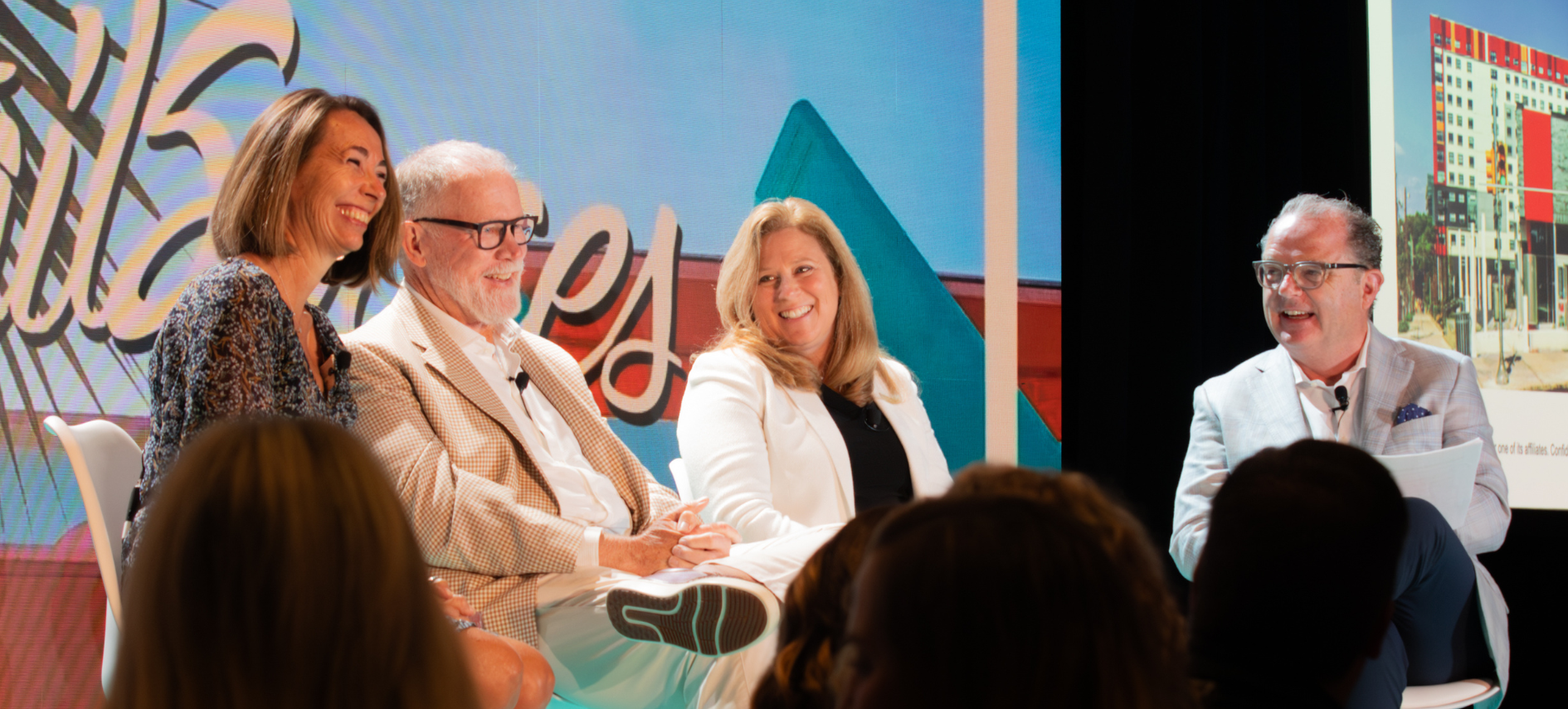Mastering the art of the rollout is essential for the seamless evolution of a brand’s brick-and-mortar offering.
Though it’s by no means an easy feat.
Whether it’s new locations, initiatives or store refreshes, the rapidly changing state of retail calls for endless improvements in speed and efficiency.
While the best in the biz have a knack for making rollout execution look effortless, those in the thick of it know appearances can be deceiving. According to Chris Delusky, Shinola's Head of Store Development, having to juggle a multitude of skills can be a stressful experience.
“In this job sometimes we’re part sociologists, part psychiatrists, part leaders and part spreadsheet operators. It’s a very difficult challenge. And then you throw design on top of all that and it’s a blender,” he said.
Part of a panel on the topic at RetailSpaces, it was clear Delusky’s view isn’t uncommon. He and fellow panelists discussed the difficulties around rollout implementation, as well as strategies to optimize the process.
Ultimately, there’s one inescapable reality when it comes to smooth execution of a rollout. Discussion moderator and LOC Associates Founder and CEO, Bob Laughrea, summed it up perfectly.
“When you boil it down, it’s the people.
“You can have all the process and procedures and the rules set in place, but if people don’t gel, I think those are the projects we struggle with the most,” Laughrea said.

Finding the Right Team for the Job
Assembling the perfect mix of people is a vital part of the process, though doing so is far from a walk in the park. Discovering those who understand the nuances of nailing a concept requires attention to detail.
“The guys at the top have a very unique, distinct vision of not only the product, but the way we display it, the way the fixtures and cabinetry look, the flooring, the paint color, all of that. These decisions have to trickle down to an adaptable, understanding team that’s focused on customer experience,” Delusky said.
No matter the project, a flexible approach is vital when finding this ideal team. As a brand’s physical retail presence evolves over time, so too will its needs for the people required.
Being Microsoft's Director of Retail and Store Development, this was something Keith Donovan has had to keep in mind, nearly a decade after the tech giant’s first stores were rolled out.
“We’re now rapidly getting into a refresh cycle and we’re finding the teams that built the store for a new rollout aren’t necessarily the right ones for a refresh, so we’re really thinking about how they have to change,” Donovan said.
Regional Relationships
This mentality also needs to be applied when coupling with external partners. Solid relationships with vendors are key to ensuring quality and design integrity, especially with stores strewn across the US and beyond. For Delusky, without a focus on collaboration at this level, plans would likely never see the light of day.
“I’m a huge fan of regional and have a huge place in my heart for family businesses.
“I prefer to work with smaller, regional general contractors (GCs) because these guys are dedicated and have probably been doing it a while. I keep these people close because they care about their business and in turn, they care about our business, our delivery, our product and quality,” Delusky said.
While praising the effectiveness of long-term partnerships with outside vendors, panelists warned weak relationships and one-off collaborations can often lead to disaster. This, an important consideration for Steve Lamontagne, GVP of Store Development at Walgreens. With over 8,000 stores nationwide and new initiatives being rolled out at as many as 150 stores per week, having vendors who understand company vision is critically important to the pharmacy chain. In ensuring results, Lamontagne insists on a hands-on approach.

“Get to know the folks on your account. When a partner of ours puts somebody on the team associated with our account, I like to interview them. They have to feel like an extension of my team culturally, have the same approach and the same sense of urgency and quality. We win together and we fail together,” Lamontagne said.
A Balancing Act
Achieving results with external partners also involves keeping their welfare front and center. Pressure from the C-Suite to complete a rollout in the quickest possible timeframe can eventually take its toll — a lesson Microsoft learned the hard way.
“We had a great vendor, a craftsman we put on the road for 45 days to go to every store and roll out an initiative and that burnt him out. He doesn’t work on our account anymore,” Donovan said.
This is just one among a slew of potential issues encountered when utilizing external partners. With stores flung far and wide, maintaining quality in execution is a major challenge for many development teams. However, in the long run, setting vendors up for success is well worth the trouble.
“Quality is sacrificed a little, in a sense that a vendor will have to learn and navigate our system, so it can be a little more difficult. But you do get quite a bit of savings,” Donovan said.
Snowflake Strategy
The varied nature of store locations can also throw a spanner in the works. Achieving design coherency in unique spaces is a demanding task for development teams.

“It’s a lot of work. 30% of our portfolio is a significant ‘snowflake.’ We’re forcing our standard refresh principals into these locations and it’s a challenge,” Donovan said.
For Walgreens, this issue is greater still, with as many as 50% of its stores requiring an alternative design approach.
“We’re far from standardized. We’ve got about 3,000-4,000 ‘snowflakes’ that require us to do up drawings, design docs, as well as have site surveys performed because we actually don’t know what’s in every store,” Lamontagne said.
Hurdles like this make collaboration all the more important in maintaining quality.
“We have a great, solid base of program directors who own the initiative, own that rollout from end-to-end,” Lamontagne said. “When it comes to our extended network of GCs and contractors on the ground, we really have to keep it tight.”
Leveraging the Tech
Luckily, the advent of useful project management software offers some reprieve from the onslaught of difficulties development teams face.
“One of the first things I did when I got to Shinola was get a web-based, development software to allow for both accountability and communication. People can be strewn across the country and even worldwide and you’ve got to be able to effectively show what everybody’s working on at the same time,” Delusky said.

Though factoring in the costs and effort involved when technology becomes redundant is an important consideration.
“There’s a point when a technology becomes stale. Turning something off and loading it all onto a new platform while keeping the wheels turning can become a huge, huge issue,” Lamontagne said.
The Times They Are A-Changin’
Just as difficult to predict is how rollout processes will look in years to come. The dizzying speed of new developments and shifting consumer expectations is something store development heads everywhere are thinking about.
“There are so many wide open options for the way, not only our business, but our department is going to operate over the next two years,” Delusky said.
As the proliferation of highly experiential concepts and the aggressive integration of digital continue to slingshot retail design into the future, companies merely thinking about tomorrow are already behind the curve.
“It feels very different than it did five years ago, quite frankly.”
“You really have to build an approach and have internal mechanisms that allow you to pivot on a dime, as the industry changes and new formats come up. You need a team that’s ready to hit the ground running,” Lamontagne said.
You can view the full discussion below...Enjoy!

Posted by
Physical Retail Reimagined.
RetailSpaces is a community for store development and design innovators.
March 29-31, 2026 | San Antonio, TX
Learn More!








Comments